The theory, design, and operation of a nuclear propulsion engine advantages are explained verses conventional chemical rockets such as the Saturn V.
Category: chemistry – Page 317

Blockchain not just for bitcoin. It can secure and store genomes too
Blockchain is a digital technology that allows a secure and decentralized record of transactions that is increasingly used for everything from cryptocurrencies to artwork. But Yale researchers have found a new use for blockchain: they’ve leveraged the technology to give individuals control of their own genomes.
Their findings are published June 29 in the journal Genome Biology.
“Our primary goal is to give ownership of genomic data back to the individual,” said senior author Mark Gerstein, the Albert L. Williams Professor of Biomedical Informatics and professor of molecular biophysics and biochemistry, of computer science, and of statistics and data science.
Physicists confront the neutron lifetime puzzle
To solve a long-standing puzzle about how long a neutron can “live” outside an atomic nucleus, physicists entertained a wild but testable theory positing the existence of a right-handed version of our left-handed universe. They designed a mind-bending experiment at the Department of Energy’s Oak Ridge National Laboratory to try to detect a particle that has been speculated but not spotted. If found, the theorized “mirror neutron”—a dark-matter twin to the neutron—could explain a discrepancy between answers from two types of neutron lifetime experiments and provide the first observation of dark matter.
“Dark matter remains one of the most important and puzzling questions in science—clear evidence we don’t understand all matter in nature,” said ORNL’s Leah Broussard, who led the study published in Physical Review Letters.
Neutrons and protons make up an atom’s nucleus. However, they also can exist outside nuclei. Last year, using the Los Alamos Neutron Science Center, co-author Frank Gonzalez, now at ORNL, led the most precise measurement ever of how long free neutrons live before they decay, or turn into protons, electrons and anti-neutrinos. The answer—877.8 seconds, give or take 0.3 seconds, or a little under 15 minutes—hinted at a crack in the Standard Model of particle physics. That model describes the behavior of subatomic particles, such as the three quarks that make up a neutron. The flipping of quarks initiates neutron decay into protons.
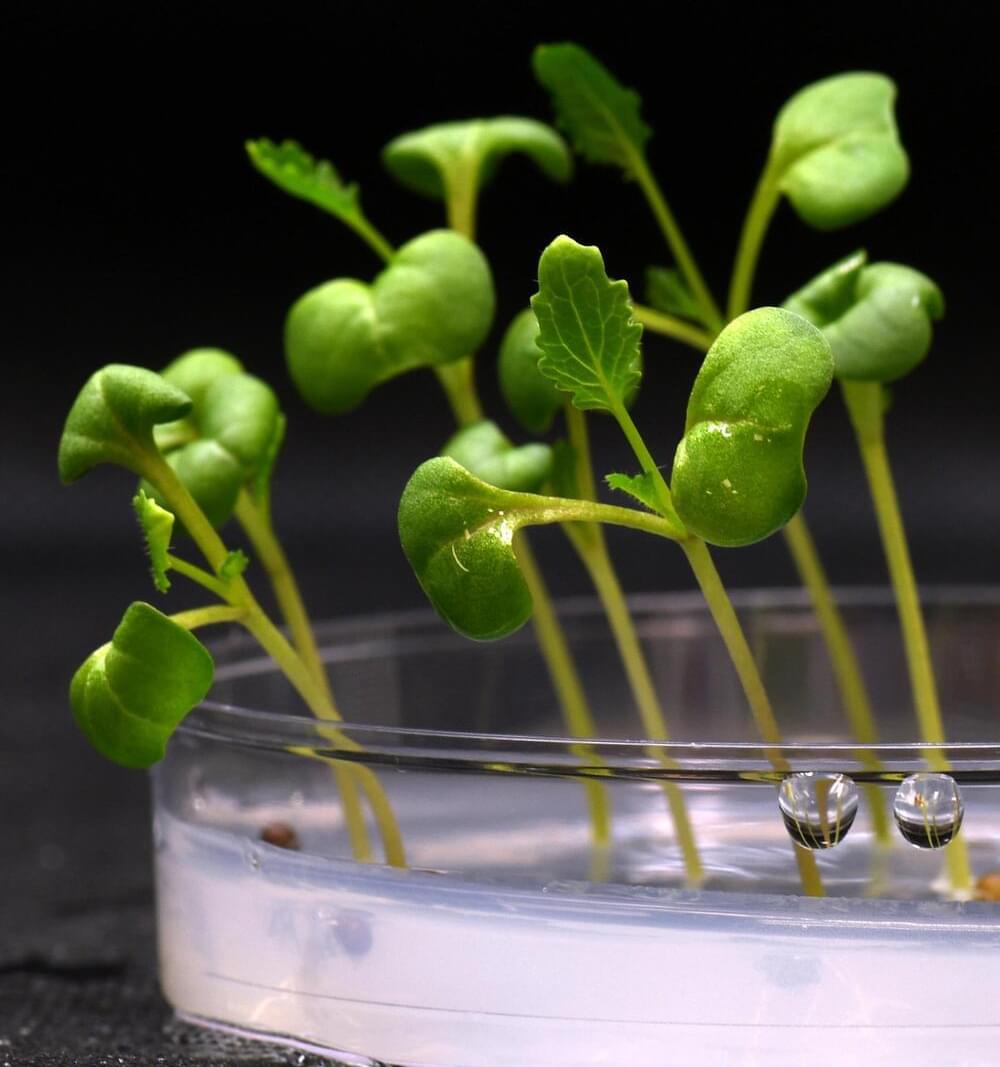
Artificial photosynthesis can produce food without sunshine
Photosynthesis has evolved in plants for millions of years to turn water, carbon dioxide, and the energy from sunlight into plant biomass and the foods we eat. This process, however, is very inefficient, with only about 1% of the energy found in sunlight ending up in the plant. Scientists at UC Riverside and the University of Delaware have found a way to bypass the need for biological photosynthesis altogether and create food independent of sunlight by using artificial photosynthesis.
The research, published in Nature Food, uses a two-step electrocatalytic process to convert carbon dioxide, electricity, and water into acetate, the form of the main component of vinegar. Food-producing organisms then consume acetate in the dark to grow. Combined with solar panels to generate the electricity to power the electrocatalysis, this hybrid organic-inorganic system could increase the conversion efficiency of sunlight into food, up to 18 times more efficient for some foods.
“With our approach we sought to identify a new way of producing food that could break through the limits normally imposed by biological photosynthesis,” said corresponding author Robert Jinkerson, a UC Riverside assistant professor of chemical and environmental engineering.

Plants Appear to Be Breaking Biochemistry Rules
😳!!!!
Researchers have just discovered a previously unknown process that makes sense of the ‘secret decisions’ plants make when releasing carbon back into the atmosphere.
“We found that plants control their respiration in a way we did not expect, they control how much of the carbon from photosynthesis they keep to build biomass by using a metabolic channel,” University of Western Australia plant biochemist Harvey Millar told ScienceAlert.
“This happens right as the step before they decide to burn a compound called pyruvate to make and release CO2 back to the atmosphere.”

The Shrinking Transistor
Researchers have identified the best silicon and silicon dioxide materials for the next generation of transistors, which are expected to be just a nanometer long.
North Carolina State University researchers found they could filter carbon dioxide from air and gas mixtures at promising rates using a proposed new textile-based filter that combines cotton fabric and an enzyme called carbonic anhydrase—one of nature’s tools for speeding chemical reactions.
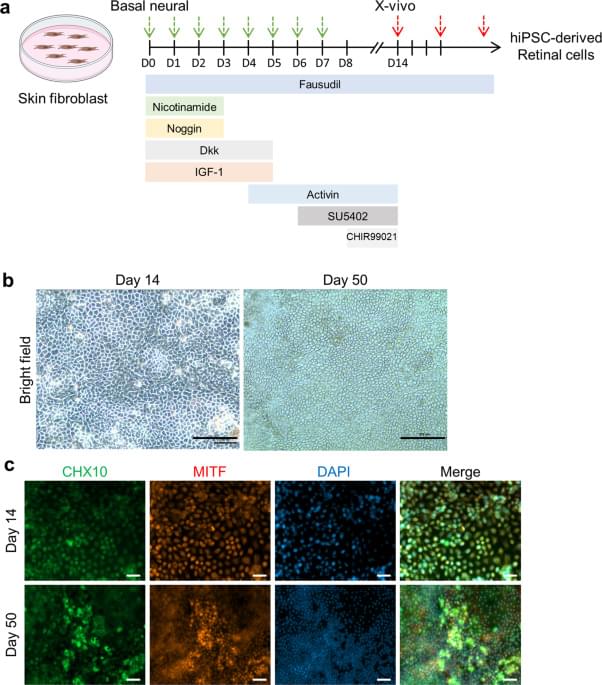
Long-term effects of human induced pluripotent stem cell-derived retinal cell transplantation in Pde6b knockout rats
Circa 2021 First breakthrough in immortality of the eyes of rats using the inducing of pluripotent stem cells in the eye. Which will eventually lead to immortality of the human eye.
The retina is neural tissue located in the posterior part of the eye and is an extension of the central nervous system (CNS), which has limited regenerative potential once damaged1. Therefore, to maintain homeostasis of the retinal microenvironment and protect itself from harmful stimuli, the retina has a unique structure consisting of inner and outer blood-retinal barriers (BRBs)2,3,4. The outer BRB is mainly composed of retinal pigment epithelial (RPE) cells, which support photoreceptor cells, the primary neurons in the retina, and play a significant role in the pathogenesis of retinal degenerative disorders, such as age-related macular degeneration (AMD) and retinitis pigmentosa (RP)5,6,7,8,9. These disorders are commonly characterized by the irreversible loss of photoreceptor cells and RPE cells, and the only fundamental treatment for these retinal degenerative disorders is replacement of damaged or atrophied cells10,11,12. Thus, regenerative treatments, such as stem cell transplantation, are emerging as attractive options for targeting retinal degeneration that was previously considered untreatable13.
RP refers to a set of hereditary retinal degenerative disorders that initially involve photoreceptors and leads to subsequent RPE cell damage; it affects 1 in 4,000 individuals worldwide9. Due to its inherent nature, extensive genetic studies are ongoing, and more than 50 causal genes have been identified14. Among the causal genes, PDE6B is a gene that encodes rod cGMP-phosphodiesterase, which is a critical component of the biochemical light transduction pathway9. Although various molecular and genetic studies have identified the pathomechanisms of RP, attempts to restore vision in patients with RP have failed. To overcome this issue, preclinical stem cell-based studies involving transient dosing or permanent implantation of pluripotent stem cells are being conducted10,11,15,16.
Permanent implantation of retinal stem cells is a promising method and is highly expected to be a potential alternative treatment strategy for replacing damaged retinal cells13,16. Sharma et al.17 manufactured clinical-grade AMD patient stem cell-derived RPE cells using RPE patches of a biodegradable scaffold, and functionally validated the effects of their transplantation. This researchers provided a pipeline for the generation of clinical-grade induced pluripotent stem cell (iPSC)-derived RPE cells, and histologically and functionally validated the efficacy of transplantation, thereby significantly advancing the retinal stem cell transplantation field; however, a single RPE cell transplantation cannot rescue already compromised photoreceptor cells and can be only applied in early stages of retinal degenerative diseases, when there are sufficient functional photoreceptor cells.
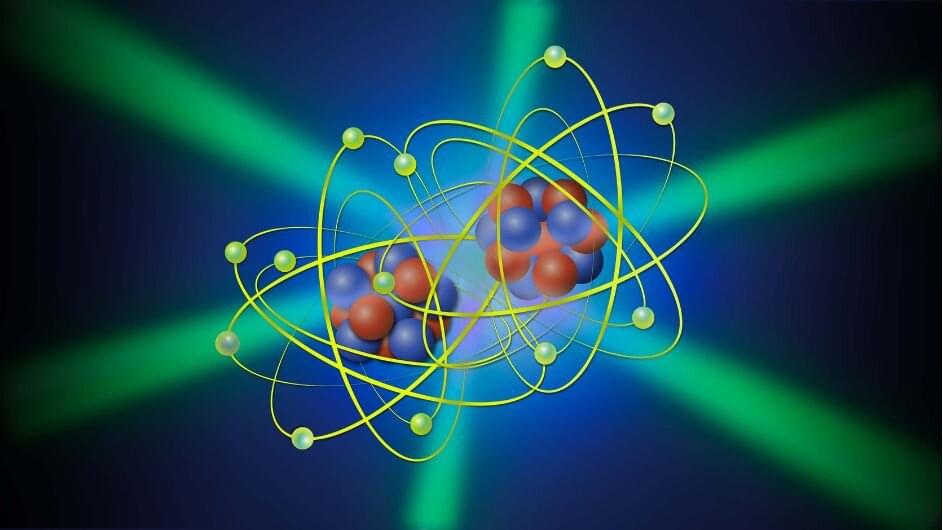
Taking quantum control of life’s building blocks
Life (as we know it) is based on carbon. Despite its ubiquity, this important element still holds plenty of secrets, on earth and in the heavens above us. For example, astrophysicists like Columbia’s Daniel Wolf Savin who study interstellar clouds want to understand how the chemicals, including carbon, swirling within these nebulous aggregations of gas and dust form the stars and planets that dot our universe and give rise to organic life.
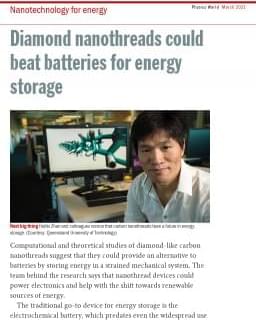
Diamond nanothreads could beat batteries for energy storage
Next big thing Haifei Zhan and colleagues reckon that carbon nanothreads have a future in energy storage. (Courtesy: Queensland University of Technology) Computational and theoretical studies of diamond-like carbon nanothreads suggest that…
Computational and theoretical studies of diamond-like carbon nanothreads suggest that they could provide an alternative to batteries by storing energy in a strained mechanical system. The team behind the research says that nanothread devices could power electronics and help with the shift towards renewable sources of energy.
The traditional go-to device for energy storage is the electrochemical battery, which predates even the widespread use of electricity. Despite centuries of technological progress and near ubiquitous use, batteries remain prone to the same inefficiencies and hazards as any device based on chemical reactions – sluggish reactions in the cold, the danger of explosion in the heat and the risk of toxic chemical leakages.
Another way of storing energy is to strain a material that then releases energy as it returns to its unstrained state. The strain could be linear like stretching and then launching a rubber band from your finger; or twisted, like a wind-up clock or toy. More than a decade ago, theoretical work done by researchers at the Massachusetts Institute of Technology suggested that strained chords made from carbon nanotubes could achieve impressive energy-storage densities, on account of the material’s unique mechanical properties.
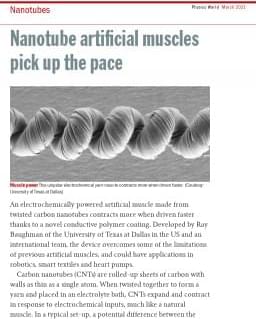
Nanotube artificial muscles pick up the pace
An electrochemically powered artificial muscle made from twisted carbon nanotubes contracts more when driven faster thanks to a novel conductive polymer coating. Developed by Ray Baughman of the University of Texas at Dallas in the US and an international team, the device overcomes some of the limitations of previous artificial muscles, and could have applications in robotics, smart textiles and heart pumps.
Carbon nanotubes (CNTs) are rolled-up sheets of carbon with walls as thin as a single atom. When twisted together to form a yarn and placed in an electrolyte bath, CNTs expand and contract in response to electrochemical inputs, much like a natural muscle. In a typical set-up, a potential difference between the yarn and an electrode drives ions from the electrolyte into the yarn, causing the muscle to actuate.
While such CNT muscles are highly energy efficient and extremely strong – they can lift loads up to 100,000 times their own weight – they do have limitations. The main one is that they are bipolar, meaning that the direction of their movement switches whenever the potential drops to zero. This reduces the overall stroke of the actuator. Another drawback is that the muscle’s capacitance decreases when the potential is changed quickly, which also causes the stroke to decrease.